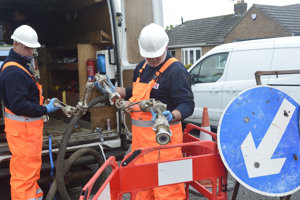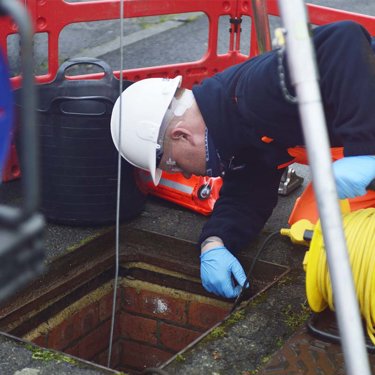Why drainage mapping is critical for environmental compliance and risk reduction
Published: 12 November 2025
When it comes to managing environmental risk on your site, few things are as important – or as overlooked – as your drainage system.
Without a clear understanding of how your drainage is laid out, what condition it’s in, and where it connects, you could be exposing your business to serious legal, financial, and environmental consequences.
What is drainage mapping and why does it matter?
Drainage mapping is the process of identifying and documenting the layout, condition, and connectivity of your site’s drainage infrastructure. This includes surface water, foul water, and combined systems, as well as underground assets like separators, attenuation tanks, and pump stations.
An up-to-date drainage plan is essential for:
- Preventing pollution incidents
- Ensuring compliance with environmental regulations
- Reducing the risk of prosecution and fines
- Supporting effective site maintenance and emergency response

The legal requirement: Know your drains
Pollution prevention guidance states you must have a drain plan. It is important to make a plan of your drains to ensure you use them correctly, carry out maintenance, and deal more effectively with pollution if there’s a spill, leak or other incident.
What should a drain plan show?
Location
See exactly where the drains on your site are situated.
Type
Identify whether the drains handle surface water, foul water, or both.
Flow
Understand the direction that water travels through the drains on your site.
Exit
Pinpoint where drains leave the boundary of your site.
Discharge
Know where your drains ultimately discharge into.
Everyone who works at the site should be able to easily find and understand the plan.
If you make changes to your site, you should check your drain plan to make sure you do not connect to the wrong drains, and update your plan with the changes.
Failure to comply could result in unlimited fines, up to 5 years imprisonment, or both – especially if a pollution incident occurs and you can’t demonstrate due diligence.
What happens if you don’t know?
If you’re unsure about your drainage layout or condition, you’re not alone – but you are at risk.
Drainage systems can quickly transport pollutants off-site, and without proper records or inspections, you may not even know there’s a problem until it’s too late.
Common hazards include:
- Misconnections between foul and surface systems
- Blocked or damaged pipes
- Unprotected gullies in high-risk areas
- Inadequate flow control devices
How we can help
We offer a comprehensive drainage mapping service that includes:
- Connectivity survey and drainage plan
- CCTV condition survey and defect grading
- Remedial cost recommendations and quotes
- Optional topographic survey, GPS logging, and sonde tracing
Our expert team can identify risks, recommend remediation, and help you establish a proactive maintenance plan to stay compliant and avoid costly surprises.

Map

Remediate

Maintain
The bottom line
Drainage mapping isn’t just a box to tick; it’s a vital part of your environmental risk management strategy. With our help, you can gain full visibility of your drainage system, ensure compliance, and protect your business from avoidable incidents.
More from our resources
 Insights
InsightsWhy drainage mapping is critical for environmental compliance and risk reduction
 News
NewsJet Aire double celebration with 25-year anniversary and new co-located depot in Newcastle
 News
NewsJet Aire announces contract with Esh Construction to deliver repair and maintenance services to Northumbrian Water Group
 News
NewsJet Aire part of a research project awarded £1.2m in Ofwat’s latest innovation challenge
Here to keep your drainage flowing freely
Our experts are available now to help you understand and improve the condition of your drainage.
Speak to our experts

